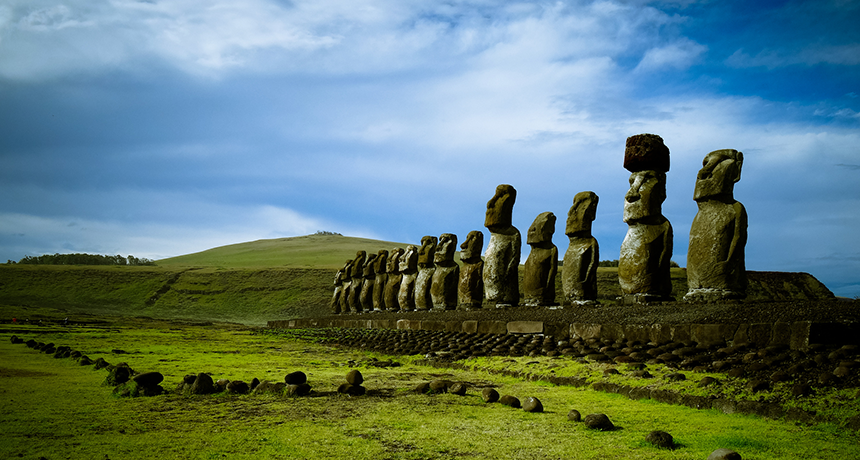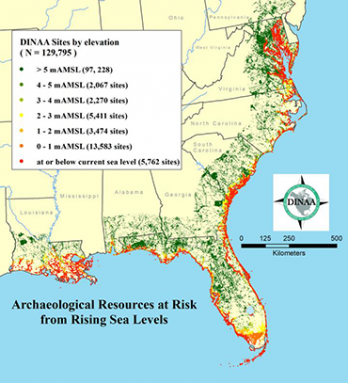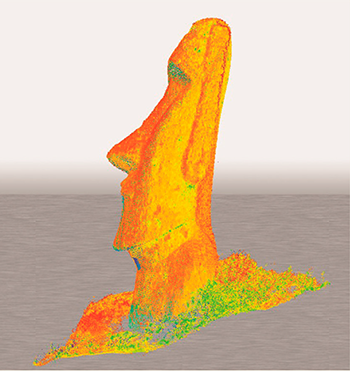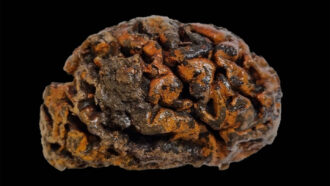Rising seas threaten thousands of world cultural sites
How we can preserve our archeological heritage in the face of rising seas

These huge stone statues are at Rapa Nui, or Easter Island. This Chilean island lies 3,500 kilometers (almost 2,200 miles) west of the mainland, deep in the Pacific Ocean. The island is one of many places worldwide that are vulnerable to sea-level rise.
Babak Fakhamzadeh/Flickr (CC BY-NC 2.0)
Sea level is rising. This threatens the future of millions of people around the world. It also threatens our cultural past.
“It’s really the history of our species that’s at risk in a lot of ways,” says Meghan Howey. She’s an archaeologist at the University of New Hampshire in Durham. Humans have lived near the coast for thousands of years. In that time, they created and left behind many cultural sites that hold pieces of the past. These are famous places such as Rapa Nui (Easter Island) in the central Pacific Ocean and the canal city of Venice in Italy. But they also include many smaller and lesser known sites. They range from Native American villages to early colonial settlements. If rising seas destroy these sites, “we’re going to lose [those people’s] stories too,” Howey says.

David Anderson is an archaeologist at the University of Tennessee in Knoxville. “If you want to learn about what people did in the past, archaeology is the best way to do that,” he says.
Anderson and other researchers recently used online data sets to look at the dangers posed by rising seas to cultural sites in the southeastern United States. A one-meter (39-inch) rise in sea level could destroy more than 13,000 of those places, they found. These include some well-known historical sites found in Jamestown in Virginia, St. Augustine in Florida, and Charleston, S.C. Many Native American sites also are at risk. The team’s November 2017 report appeared in PLOS One.
That study looked at just one region. But elsewhere around the world, countless other sites also face risks from climate’s impact on sea level.
Howey did a similar count in New Hampshire. Up to 14 percent of the state’s heritage sites could be lost to sea level rise, she found. Studies have also found similar risks — in the range of 15 to 20 percent — globally, she notes. “And that’s only what we know about,” she adds.
What now?
Climate change is underway. So now is the time to start thinking about sea-level rise, Anderson says. “How are we going to protect the important places in the landscape? We need to know what’s out there and what’s threatened.” Otherwise, it may become too late to save at least some of these sites.

Efforts to limit the worst impacts from climate change, including sea level rise, will require cutting greenhouse-gas emissions, for example. And maybe taking steps to limit flooding in important areas.
Another approach might be to move cultural treasures. But projects like that are often costly. It’s unlikely that funds to do that will be available for every site. And some treasures simply can’t be moved.
But high-tech tools might help preserve knowledge of those treasures before physical sites are lost, says Mark McCoy. He’s an archaeologist at Southern Methodist University in Dallas, Texas. He recently suggested how this might be done at many sites in Polynesia. That’s an area composed of many Pacific low-lying islands.
Rising seas endanger many of those islands — and their cultural treasures. If researchers used only traditional methods to map those places, “most would be gone before you got to them,” he says. Satellites with cameras and other remote-sensing tools, however, can more quickly and easily find and map many of these sites, he says. Those data can also help researchers assess the risks to particular spots.
Scanning and imaging tools can help, McCoy explains. For example, LIDAR is a type of system that uses lasers to make precise 3-D scans of objects. High-resolution digital photography can make detailed images. Computer technologies also can create 3-D virtual reality models. They may not save cultural sites, but they could preserve at least some knowledge about them for the future. His report appeared in the January 2018 issue of Sustainability.
Rising seas are likely to eventually bury a lot of archaeological treasures. And in some cases, the old techniques that archaeologists have long employed also may help. “I still use traditional methods out on a site when the conditions call for it,” McCoy notes. For instance, he notes, “Paper and pencil do not require batteries and don’t break when I drop them on rocks.”
Seagate Technology/YouTube







